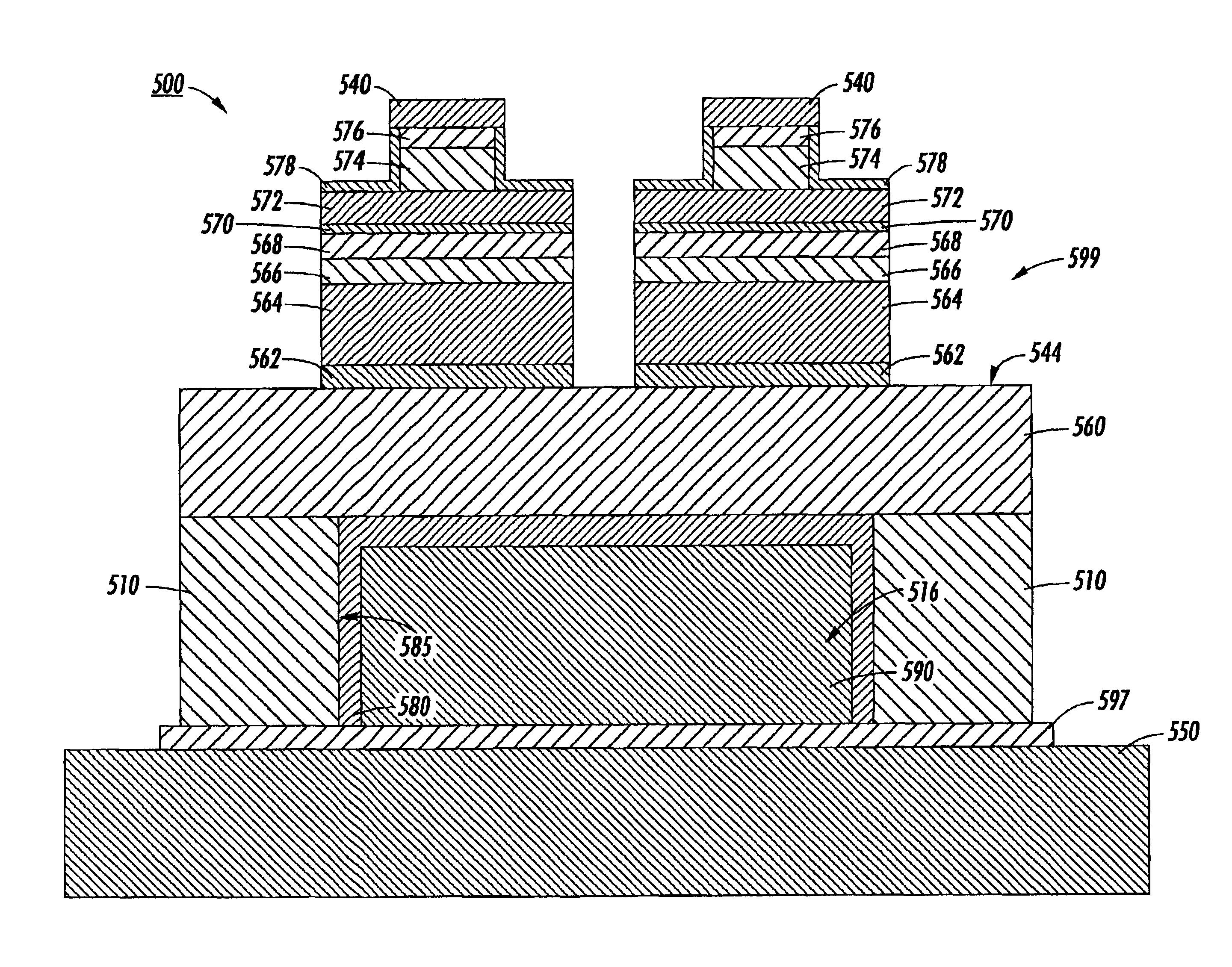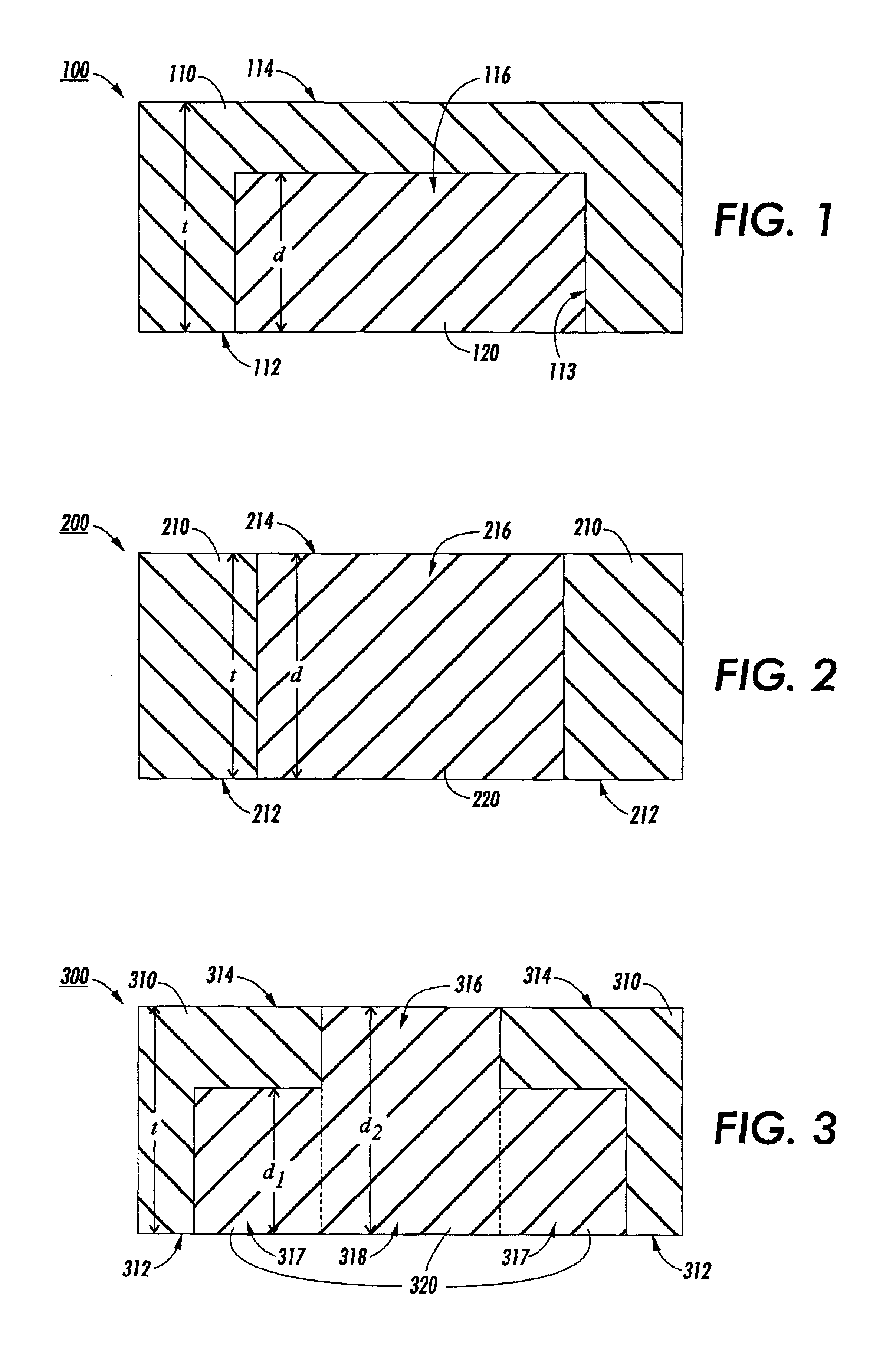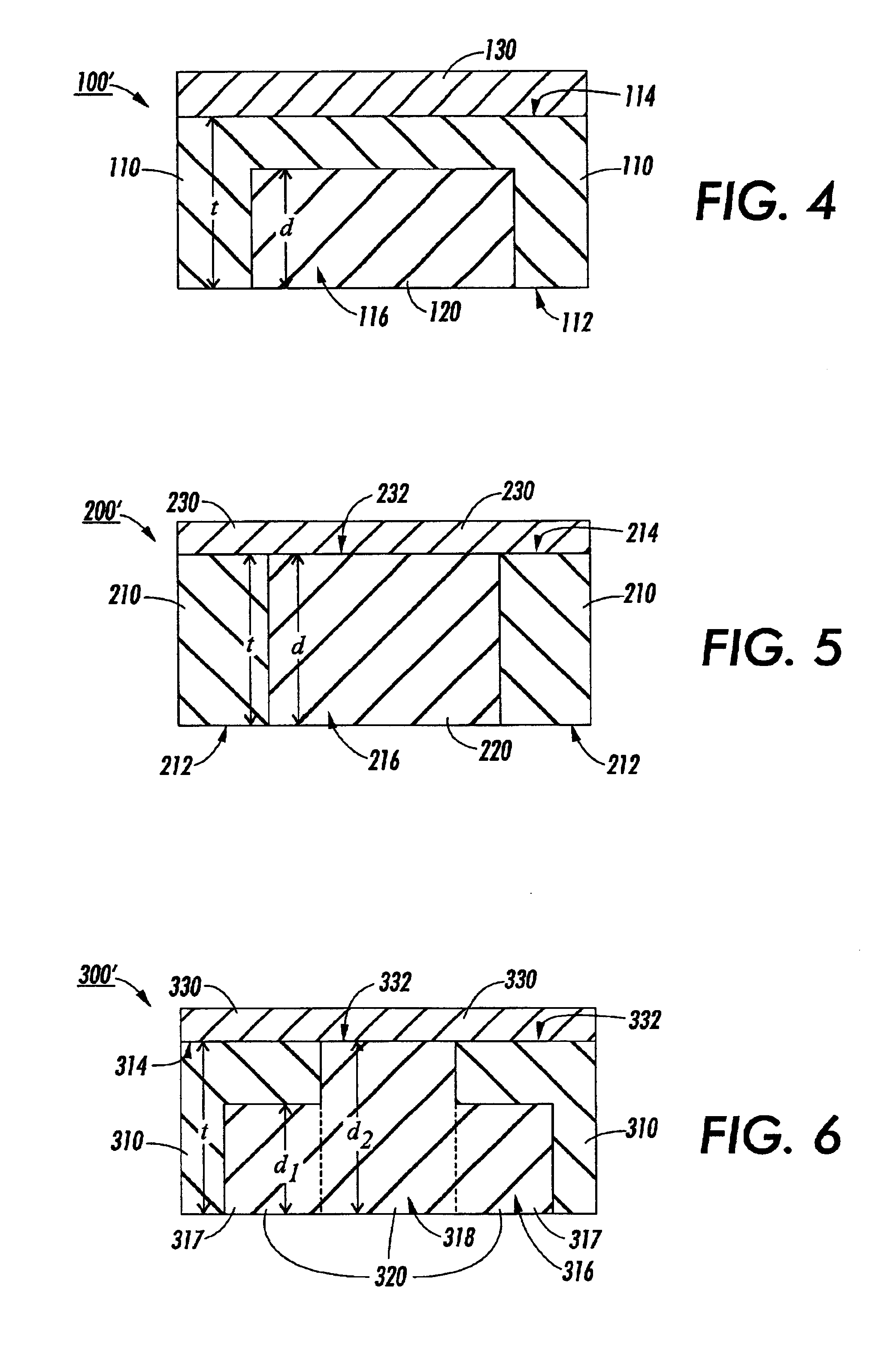Substrates having increased thermal conductivity for semiconductor structures
a technology of semiconductor structure and thermal conductivity, which is applied in the direction of semiconductor laser structure details, semiconductor lasers, lasers, etc., can solve the problems of inefficient heat flow out poor and increase in temperature detrimental to the performance of the semiconductor devi
- Summary
- Abstract
- Description
- Claims
- Application Information
AI Technical Summary
Benefits of technology
Problems solved by technology
Method used
Image
Examples
second embodiment
In various other exemplary embodiments, such as the second embodiment illustrated in FIG. 5, a semiconductor device 200' includes the substrate 200 according to this invention, as illustrated in FIG. 2 and described above. A semiconductor structure 230 is formed over the top surface 214 of the substrate 200.
The cavity 216 opens onto the top surface 214 and the bottom surface 212. The material 220 contacts a bottom surface 232 of the semiconductor structure 230.
third embodiment
In various other exemplary embodiments, such as the third embodiment illustrated in FIG. 6, a semiconductor device 300' includes the substrate 300 according to this invention having the cavity 316 with a stepped configuration, as illustrated in FIG. 3 and described above. A semiconductor structure 330 is formed over the top surface 314. The cavity 316 opens onto the top surface 314 and the bottom surface 312. The material 320 contacts a bottom surface 332 of the semiconductor structure 330.
Various exemplary embodiments of the semiconductor devices according to this invention further include at least one p-contact and at least one n-contact. In a fourth exemplary embodiment of the semiconductor device 100", as illustrated in FIG. 7, the semiconductor device includes at least one p-contact 140 and at least one n-contact 144. The p-contacts 140 are in contact with the semiconductor structure 130. The n-contact 144 is also in contact with the semiconductor structure 130. A heat sink 150...
PUM
| Property | Measurement | Unit |
|---|---|---|
| thickness | aaaaa | aaaaa |
| width | aaaaa | aaaaa |
| width | aaaaa | aaaaa |
Abstract
Description
Claims
Application Information
 Login to View More
Login to View More - R&D
- Intellectual Property
- Life Sciences
- Materials
- Tech Scout
- Unparalleled Data Quality
- Higher Quality Content
- 60% Fewer Hallucinations
Browse by: Latest US Patents, China's latest patents, Technical Efficacy Thesaurus, Application Domain, Technology Topic, Popular Technical Reports.
© 2025 PatSnap. All rights reserved.Legal|Privacy policy|Modern Slavery Act Transparency Statement|Sitemap|About US| Contact US: help@patsnap.com



